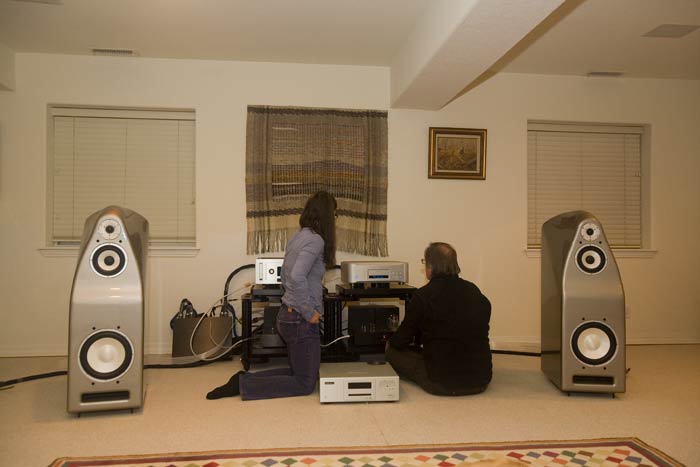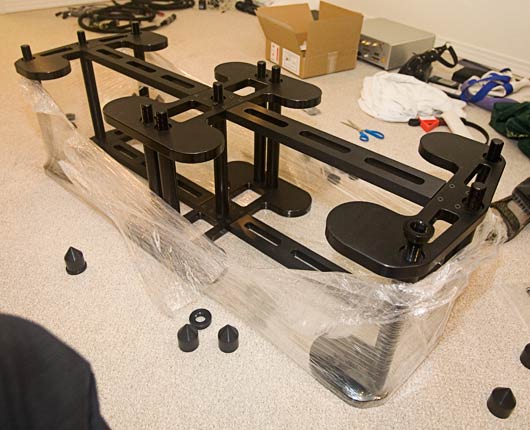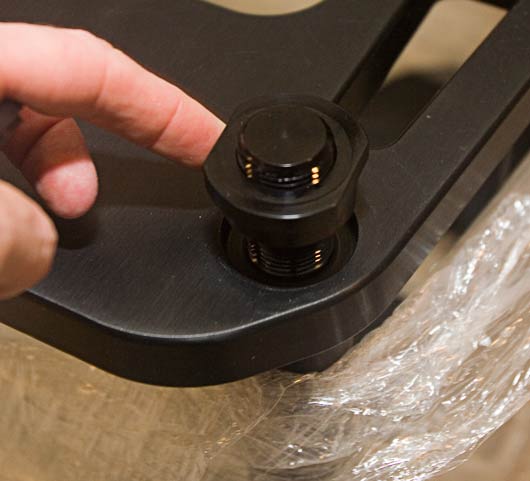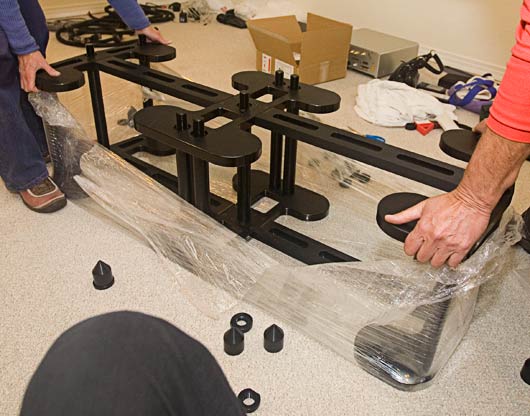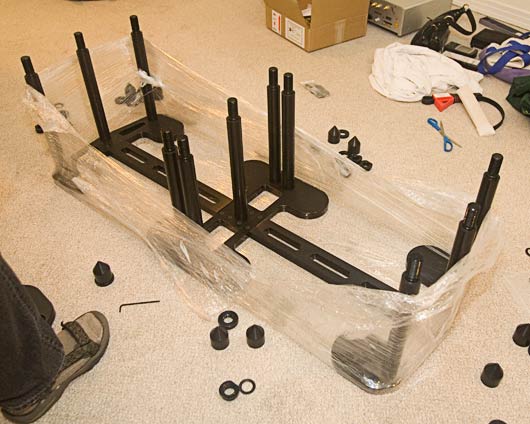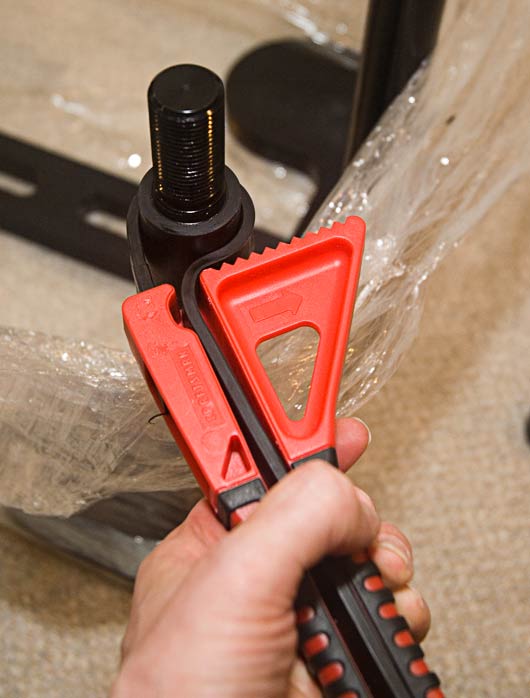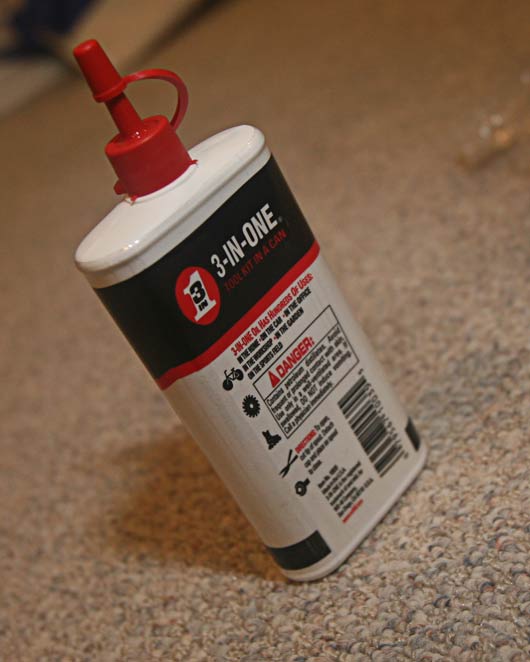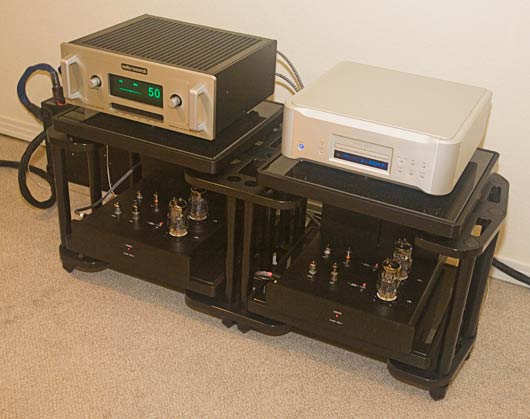
In this corner, weighing in at about 200 lbs [well, that is what it FEELS like – leaning over to get this on a rack is no feat for the timid. Neli was able to do it, but not without a few remarks :-)], but really at 68.4 lbs, the Esoteric K-01. And in the other corner, at 37.5 lbs, the EMM Labs XDS1.
We have been dealers for EMM Labs for about 7 years, if I remember correctly. We would like to be dealers for Esoteric someday, when we expand our operations, [in the not too terribly distant future we are fervently hoping!].
That said, the shootout did not reveal any serious surprises that a skeptical reading through the current voluminous content on the web does not already point out.
The system was for this shootout was:
Hansen Prince speakers
Lamm ML2.1 amps
ARC Ref 5 preamp
Nordost Odin speaker and interconnect
Elrod Statement Silver power cords on pre and amps
Bybee power distributor
Harmonic Resolution Systems SXR equipment rack, M3x platforms and Nimbus
Jorma Design Prime (single-ended) interconnect on the CD players
First Synergistic Hologram D then Nordost Odin power cords on the CD players

A photo of the Esoteric K-01 remote

A photo of the Esoteric K-01 remote
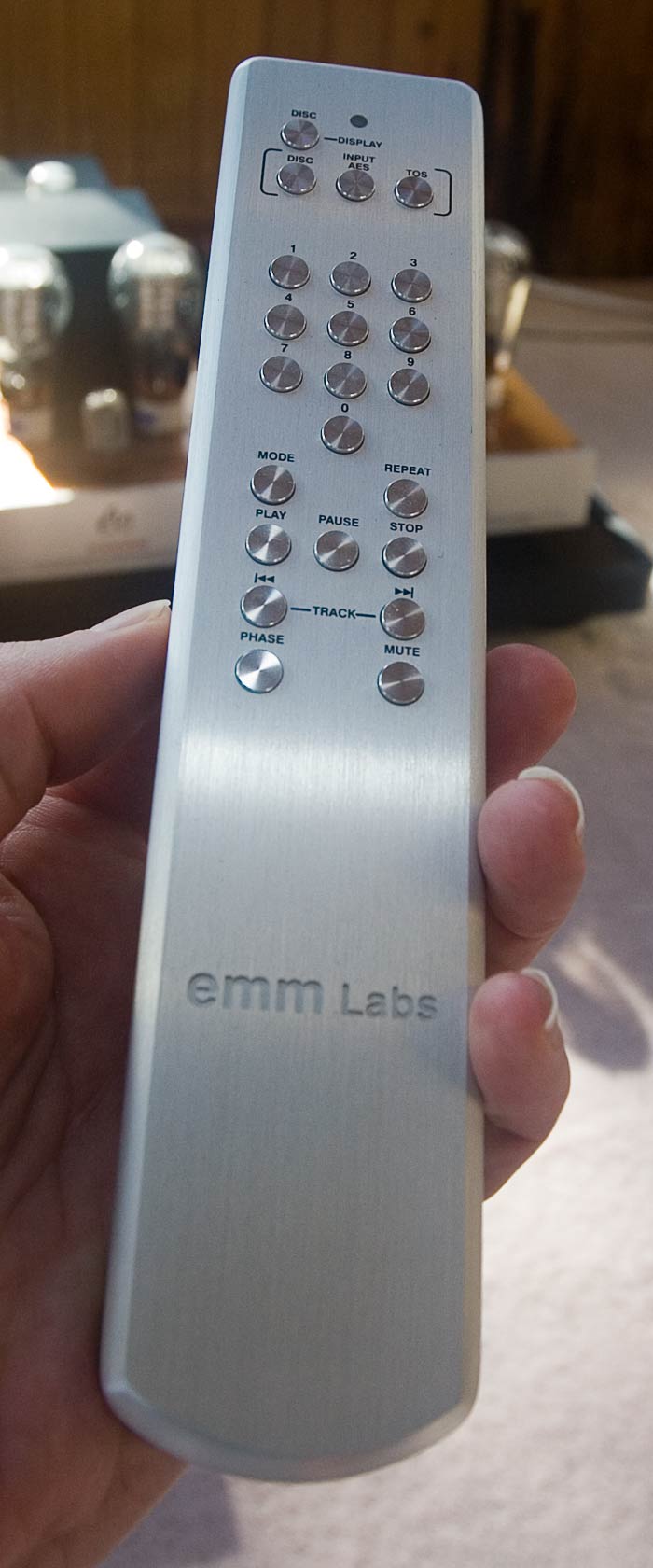
A photo of the EMM Labs XDS1 remote (we forgot to bring it to the shootout [it’s always something], so this is a photo from this morning)

Here are Neli and P. configuring the Esoteric K-01 to generate output on the single-ended outputs. We also tried both the 4X oversampling and DSD filters [I thought the DSD filter was more digital sounding, Neli and P. thought it had more resolution and liked it better]. Previous tests had shown little difference in performance between balanced (XLR) and single-ended (RCA) interconnects [irregardless of the ARC reportedly being a balanced architecture].
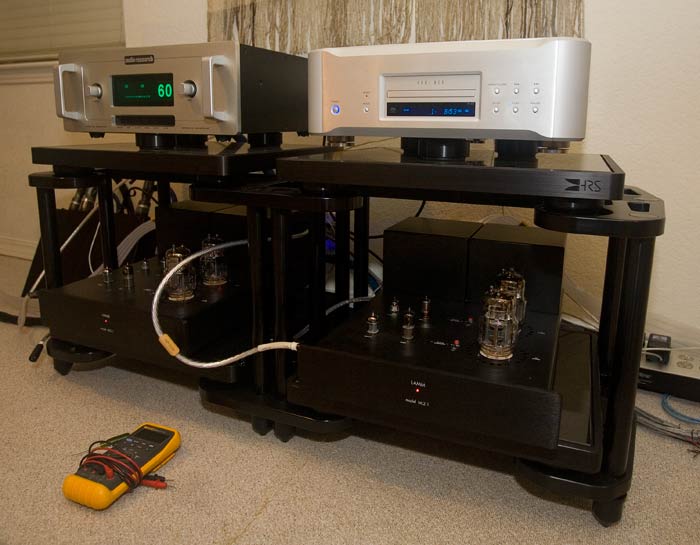
[The Fluke multimeter was used to bias the Lamm amps after their recent move to this location, with presumably a different wall voltage than the previous location across town].
That Odin interconnect is kind sticking out of the rack at an odd angle, isn’t it? 🙂 All I know is that *I* was out of the room at the time :-).

The Esoteric K-01
Both the K-01 and XDS1 were put up on HRS Nimbus Couplers – significantly better than the sound with the standard feet.
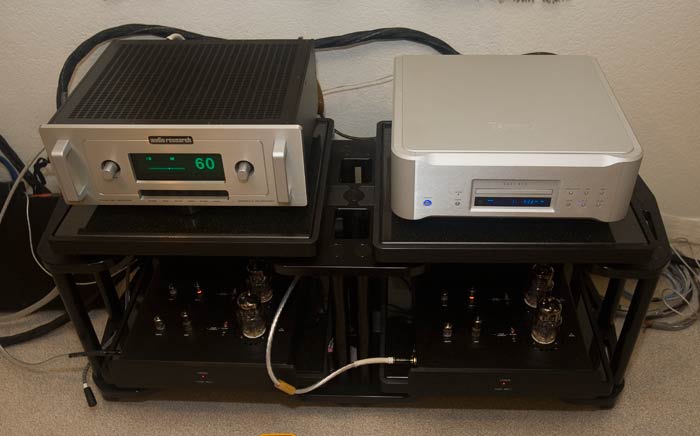
The Esoteric K-01

The EMM Labs XDS1
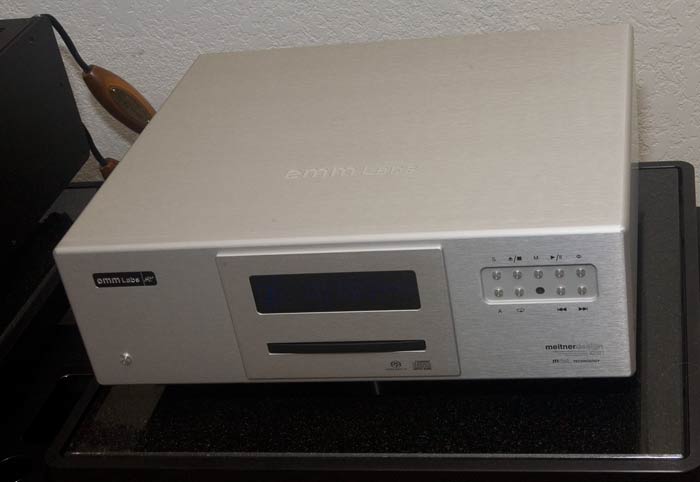
The EMM Labs XDS1
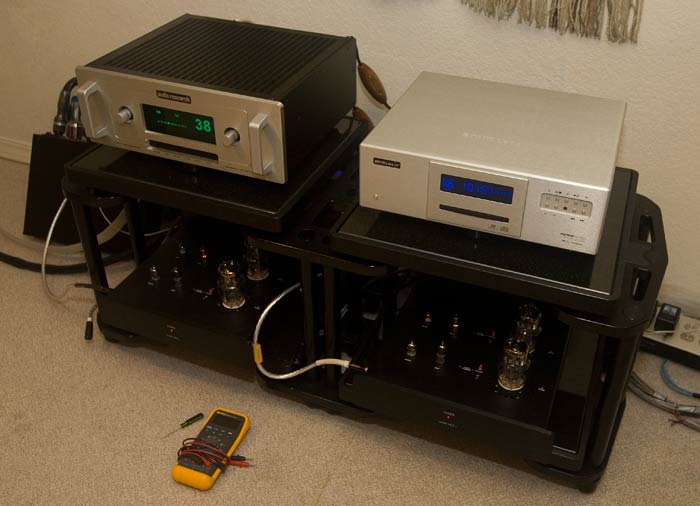
The EMM Labs XDS1

We played mostly light Jazz, large scale classical, and the 1st cut off of Radiohead Amnesiac. All told we spent about 5 hours at this shootout.
We first did a round of shootout with the Synergistic power cord on the players, and then a round with the Nordost Odin power cord.
The Odin brought the performance of the 2 players MUCH closer together [bringing subtlety and imaging to the K-01 and more slam to the XDS1] but their differences were still quite evident.
Esoteric K-01
[Note that other power cords may do as well here in place of the Synergistic – not just the $$$ Odin, but just note that this player IS power cord sensitive, more so than the EMM Labs I think]
* More authority [in the end, I thought this the most compelling aspect of the sound of the K-01]
* More HiFi sounding [sounded more like a stereo than music – a lack of subtle information made each note stand alone as opposed to forming a whole. 95% of this went away with the Odin power cord. There was little or no imaging(!) either until we replaced the power cord]
* A little leaner [but not in such a way that detracted from the music, IMHO]
EMM Labs
* More like music [for many reasons, I think. Voices had more information in them, allowing us to hear emotion. Notes had more information, allowing us to string them together into songs. Much more listening to music as opposed to listening to how each note sounds]
* Softer, more laid back [The K-01 was more forcefully dynamic]
—————
This shootout really revealed the strengths of these 2 players: The XDS1 sounding like music in spite of being solid-state :-), and the K-01 having great powerful midi- and macro-dynamics [and not just in the bass], in spite of being solid-state 🙂
Strangely enough, these 2 players were closest on the track I played, the Radiohead. Notes are coming from all over the place anyway, so the K-01 did great, and the XDS1 really brings out the voice of the singer and his longing to be left alone. On this track the K-01 was more like a kid running around in a candy store, listening to this note, then that note…the XDS1 more holistic, more drug-like .
I also want to say that, contrary to what I have read elsewhere, the K-01 does NOT have more resolution – in fact it has less – the K-01 does emphasize the main body of each note more than the XDS1 however, and that might be interpreted as detail by some, but the overall information here is really is less because the subtle, more nuanced parts of the notes are quite a bit less prominent.

